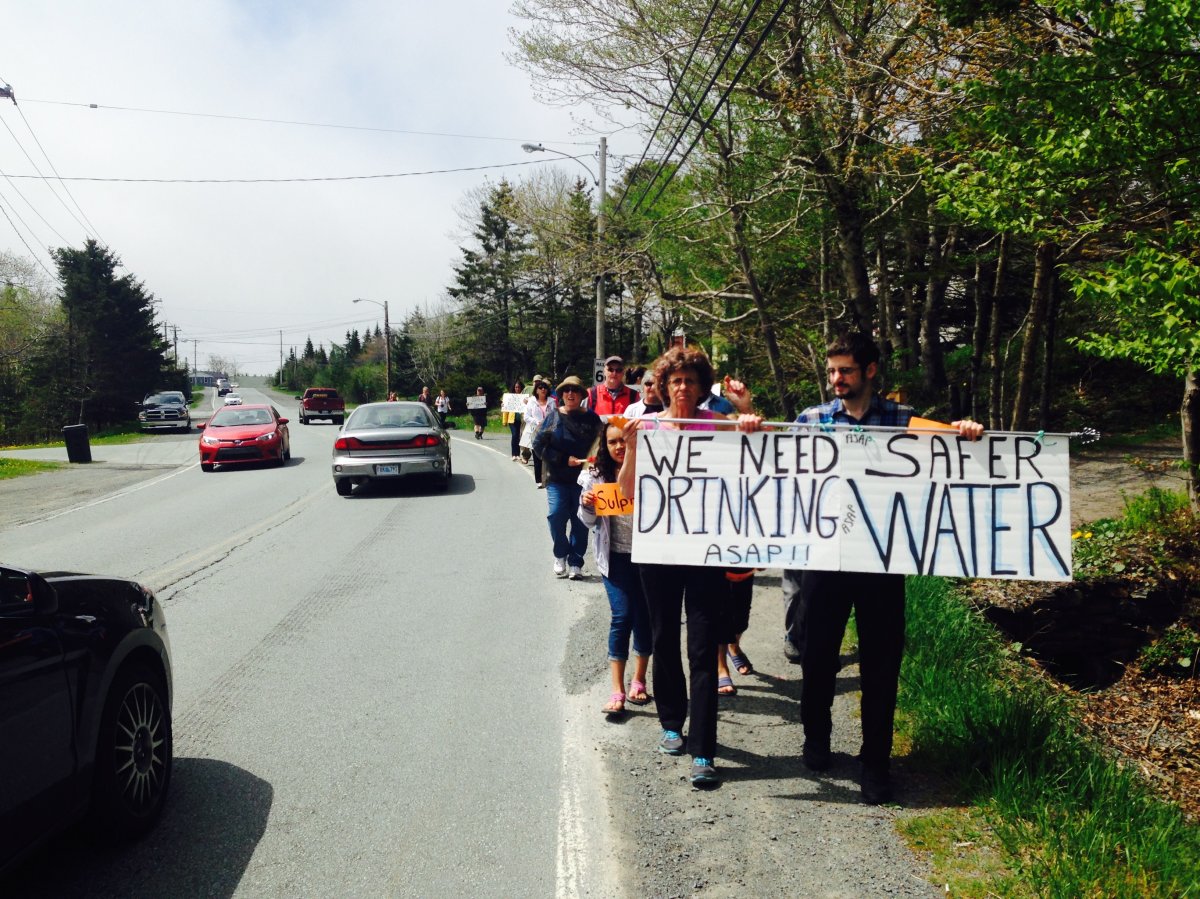The plight of Harrietsfield residents whose water wells are contaminated by toxins would shock most Nova Scotians, an environmental advocacy group says.

“The first reaction is disbelief,” said East Coast Environmental Law (ECELAW) executive director Aaron Ward.
READ MORE: Harrietsfield water concerns ‘not a great state of affairs to be in’: Halifax MP
Haligonians and Nova Scotians “can’t believe that something this close to a provincial capital can have contaminated water, that they can’t drink the water from their taps.”
“People know in their heart that it isn’t right,” Ward said.
For more than a decade, water tests of eight Harriestfield residences have shown increased incidences of substances like uranium and arsenic. Those results have been linked to a now-closed recycling and demolition plant up-gradient from the homes.
At least eight residential wells are monitored by the provincial Department of Environment and letters are sent on a yearly or quarterly basis updating the residents on the status of their wells.
The government maintains that despite the impact from the site, all residents have access to safe drinking water.
“Sampling results for those occupied properties have shown that the drinking water is within the health standards after treatment,” environment department spokesperson Heather Fairbairn said in a statement earlier in March.
Residents drive to get fresh water
Two legal groups advocating for the residents disagree with the department’s position. East Coast Environmental Law and Ecojustice are using World Water Day to launch a social media campaign using the hashtag #HelpHarrietsfield on Twitter.
They say many residents don’t have sufficient treatment systems on their wells, forcing some to drive six kilometres to a local church which allows them to fill up water bottles for free.
“They may have access to potable water by driving to a church six kilometres away, but I don’t think anyone sees that as a solution,” Ward said.
“I want to be very clear that contrary to what now two successive environment ministers have suggested, there is still contamination in the water and it does need to be addressed.”
In February, Environment Minister Margaret Miller issued two clean up orders to the companies that used to operate the site.
The first deadline for the orders is for the companies to hire a qualified site professional by March 31, and then submit a site assessment to the department by July 31.




Comments